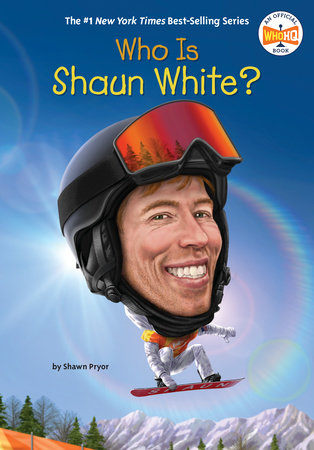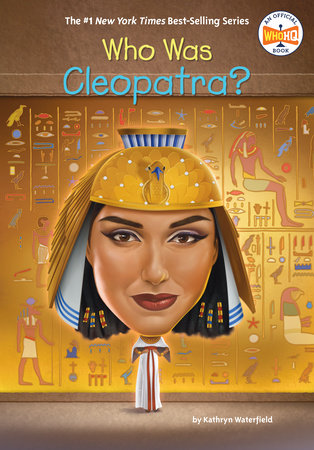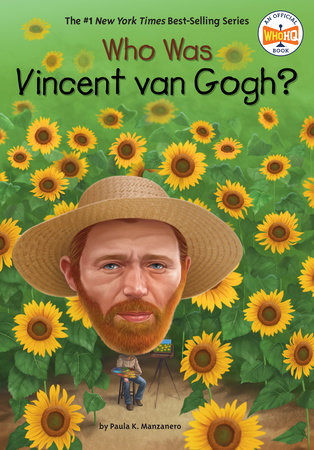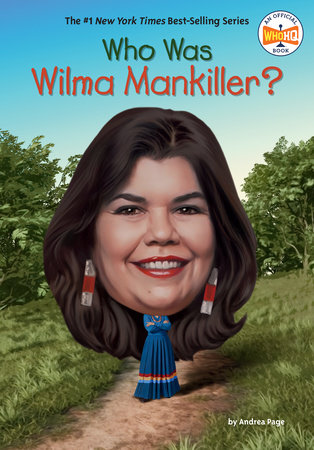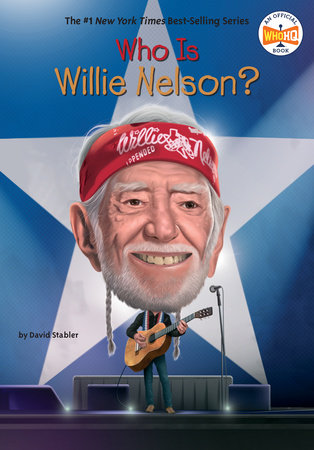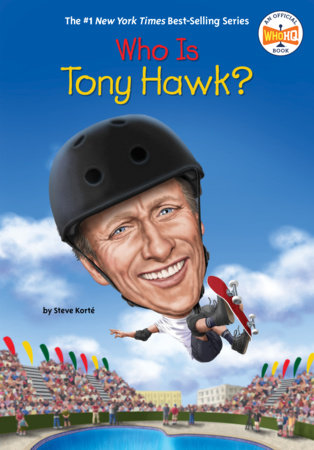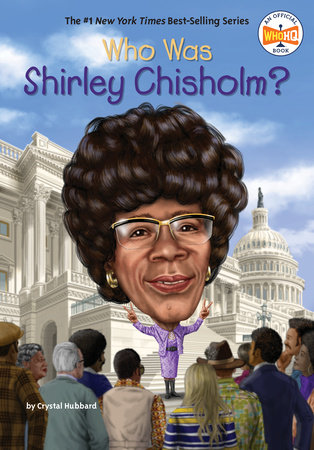Excerpt
Who Is Shaun White?
Who Is Shaun White? On February 17, 2010, the men’s halfpipe final competition at the Winter Olympics was held on Cypress Mountain, in Vancouver, Canada. In snowboarding, a halfpipe is a huge semicircular trench built out of heavily packed snow (or dirt covered in snow) to make ramp--like walls. Those walls can be as high as twenty--three feet! Snowboarders surf these snowy walls, going from one side to the other. When they reach the top of a wall, while in the air, they perform tricks with their snowboards before landing back in the pipe. Snowboarding events are held worldwide and have been a part of the Winter Olympics since 1998.
One of the contestants in the 2010 men’s halfpipe competition was Shaun White, a five--foot--eight--inch--tall American snowboarder. Because of his exciting snowboarding moves and long red hair, he was nicknamed the “Flying Tomato.” Everyone was focused on what Shaun planned to do during his second run. No one else in the competition could beat his incredibly high first--run score of 46.8, so Shaun didn’t even have to take his second turn. But he had something to prove: He wanted to make sure that everyone knew that he was the best in the world.
Standing at the top of the halfpipe, Shaun got ready for his second and final run. With a quick push, he flew down the slope quickly, raced to the other side, and became airborne, twirling multiple times before landing, then swooping up the other side of the pipe. Shaun twirled in the air again, completing his snowboarding tricks with ease! The crowd cheered him on as he landed and retook the air. It was during his last airborne move, though, that he amazed the entire world as he combined three -and a -half twists and two flips in the air with the snowboard strapped to his feet! On his perfect landing, the crowd roared! The air trick he had successfully pulled off was called the Double McTwist 1260. This was the first time anyone had successfully attempted it in any competition. Because of this run, Shaun scored 48.4, beating his own previous high score of 46.8.
“I wanted a victory lap that would be remembered,” said Shaun White after performing the Double McTwist 1260 and taking home the gold medal in the halfpipe for Team USA. “I achieved that.” No other Olympic snowboarder at the time had accomplished such a tricky move.
This was only one highlight in Shaun White’s historic career. He helped usher in a new era of athletes and helped make snowboarding the popular sport it is today. As a world record holder for the most Olympic gold medals by a snowboarder, he remains one of the sport’s greatest superstars.
Chapter 1 Childhood Shaun Roger White was born on September 3, 1986, in San Diego, California, to his parents, Cathy and Roger White. Shaun is the youngest of four children. His half--brother, Jesse, is seven years older than he is, and his sister, Kari, is two years older. He also has an older half--sister, Jessica.
When Shaun was still an infant, doctors discovered that he had more than one heart defect. He had open--heart surgery just after he was born. Shaun’s first heart surgery was not successful, and at the age of eighteen months, he needed another surgery. During this time, Shaun’s sister, Kari, was also dealing with health problems and required brain surgery. “From there it was just a whirlwind of Kari, Shaun, Shaun, Kari; they used to share the same crib in the hospital,” said Cathy.
Because of all the problems with his heart and the surgeries he needed when he was still very young, it was thought that Shaun wouldn’t be able to play any type of physical sports. The surgeries left him with a scar on his chest. He had to have routine checkups with the doctor to monitor the stress levels on his heart and to make sure that everything was okay. The stress tests were intended to show how much he could push his body before it affected his heart. After the stress tests were done and Shaun’s health improved, at the age four he was allowed to engage in more physical play again. But he was told not to sit in hot tubs or go scuba diving, because those activities would not be healthy for his heart.
Shaun and Kari played together a lot as kids because they were close in age. “Shaun and I were the closest,” says Kari. “I’d make him French toast after school and keep an eye on him.” Shaun was full of energy, and sometimes that would get him into trouble at home, because he was very fearless as a child.
He felt that overcoming his limitations worked to his advantage. He once told a group devoted to heart surgery survivors that “something about having this experience at a young age really put a fight in me.”
One day, when Shaun was five, Roger brought home a skateboard ramp to put in the backyard. He had gotten it from a neighbor. Even at a young age, Shaun was not afraid to try the wildest stunts on it. He would dive off the ramp and onto the backyard trampoline. “I just remember being obsessed with being in the air,” Shaun said. All those stunts showed his parents that he had great balance and athletic ability. “He had nerves of steel. I don’t even think he feels pain sometimes,” his mother recalled. Shaun was always pushing himself to go further, faster, and higher.
Shaun’s mother was a waitress. His father worked for the San Clemente water department. His parents both had been very athletic when they were younger. Cathy’s parents had been professional roller derby players. Roger was a very talented surfer. He had wanted to be a professional surfer, but his father was not supportive of him having that type of career. He tried to get Shaun into surfing at a young age. “Shaun was supposed to be a surfer,” Roger said. “I put him on a boogie board when he was really young, about four years old.” In fact, Shaun is named after professional surfer Shaun Tomson. Shaun’s father hoped his son would follow in Tomson’s footsteps.
As a child, Shaun surfed, played soccer, skateboarded, and went skiing with his family. They bonded around their time together, skiing and snowboarding in the mountains.
Shaun loved trying to do anything his brother, Jesse, did. Because Jesse loved to snowboard, Shaun became very interested in it. Snowboarding then became more important to him than skiing. And Shaun began to focus on it.
He remembered, “I was five when I started snowboarding. I was entered into competitions of snowboarding at seven. Everybody in the family snowboarded.” Because Shaun was so young, his mother told him the only way he would be allowed to snowboard with Jesse was if he rode with what is known as a switch stance. This would help Shaun learn how to control his speed and balance. Riding “goofy” means your dominant foot is forward—-most people are right--handed,
so this would be the right foot. Riding with a “switch” stance means you’re standing with the opposite foot than you would normally ride with forward. These terms are used in both skateboarding and snowboarding.
Shaun listened to his parents about the importance of understanding the technical skills of snowboarding. That helped him learn how to snowboard on the slopes. His mom believed that if he were to fall in the snow while learning how to snowboard, the snow would act as a form of padding—-unlike the hard ground in skateboarding.
Although Jesse later said that it had taken him about a week to master the switch stance, he remembered that it took Shaun only four runs down the slope. “It was incredible.”
Because his parents worked full--time, the weekends were the best time for everyone to be together. It was a major commitment for the family to go snowboarding every weekend, but they all enjoyed the time they spent together.
History of Snowboarding The first snowboards were invented by Sherman Poppen in 1965. Sherman was an engineer and created the snowboard for his children. He joined two skis together and attached a rope to one end so a person could have some steering control as they stood on the board and glided down a hill. He called it the Snurfer.
Seven years later, Dimitrije Milovich helped the snowboard to evolve. As a college student, Dimitrije was known for sliding down snow--covered campus hills using cafeteria trays. Wanting something better, he designed his own snowboard, which he nicknamed the Winterstick. His snowboard design is very similar to the snowboards that we see today. Dimitrije decided to leave college and move to Utah, where he created his own snowboard business, called Winterstick.
GNU snowboards were created by Mike Olson and Pete Saari in the United States, in 1977. During the 1980s Mike and Pete decided to start making snowboards specifically for women, which was a first. Jamie Anderson, one of the most medal--winning female snowboarders of all--time, used GNU snowboards during her career. Chapter 2 Learning as a Family Shaun and his siblings practiced snowboarding on the San Bernadino Mountains in Southern California, as much as a three--hour drive from their home. As fun as snowboarding can be, it is also an expensive sport, which requires equipment and tickets and passes to snowboard sites.
Shaun’s parents did whatever they could to make sure that he and his siblings got to spend as much time as possible in the mountains learning the sport. When taking the lift to get to the top of the run, Shaun wasn’t quite sitting in the chair securely. After his mother told him to stop, Shaun started to ride the lift safely.
Because the family couldn’t afford to stay at the resorts around the San Bernadino Mountains, they slept in their family van in the resort parking lots during winter weekends. They took the backseat out of the van and put a few beds down. This let them get to the mountains, snowboard, and save money at the same time. The also frequently traveled to Mount Hood in Oregon. “We used to camp out . . . in our family van. They had hot water at the rest stop, so we’d fill up, like, one milk jug to get wet and then a second jug to clean the soap off.” There were times when the family had to bundle up in the van to stay warm at night, but they did their best to make the vehicle into a portable home.
Occasionally, the family would use the resort bathrooms to clean up in the morning and brush their teeth.
Shaun would snowboard all day, and then after he finished, he would skateboard until it was nighttime. He loved it. “I just remember going and going and never getting tired. It was so much fun.”
Shaun was a fantastic snowboarder by age six, in part because he practiced so much. He began participating in amateur snowboarding tournaments. “My parents had taken a loan out on their home to pay for the snowboarding. I didn’t come from a ton of wealth in the family, but with that came that fight.” His mother contacted Jake Burton Carpenter, known as the Godfather of Snowboarding, and asked if his company would sponsor Shaun for his tournaments. He agreed. The company, Burton Snowboards, sponsored Shaun, who was only seven years old. Shaun now used a snowboard and snowboarding gear with the Burton brand name while competing. When he started to compete in more tournaments, his parents converted an old van into an RV so the family could travel and have a place to stay while on the road. At the age of seven, Shaun won his first competition!
Jake Burton Carpenter (1954–-2019) Born in New York City, Jake Burton was one of the inventors of the modern snowboard. He created the snowboard that riders like Shaun White and others use today. He started his snowboard manufacturing business in 1977 in a barn in Vermont. He would work as a caretaker of the horse barn during the day, make snowboards when he could, and then test the boards on his days off. Four years later, Burton Snowboards was a full--fledged business specializing in snowboards and snowboarding gear. Over the next several years, Shaun dominated the amateur circuit, winning five national titles. In amateur tournaments, athletes who participate do not get paid to compete. Shaun was winning awards as an amateur athlete, but he wasn’t earning money. In order to participate in professional events with the opportunity to win awards and money, a snowboarder has to join the United States of America Snowboard and Freeski Association (USASA) and participate in USASA competitions.
The USASA hosts more than 500 snowboard and freeski events (skiing that involves tricks and jumps) yearly at almost 120 ski resorts across the United States. The season finishes at the USASA National Championship in Copper Mountain, Colorado. The National Championship lasts twelve days and more than 1,800 snowboarders and skiers participate in it. Shaun knew that eventually he was going to have to move to the professional world of snowboarding if he wanted to take his career to the next level.


